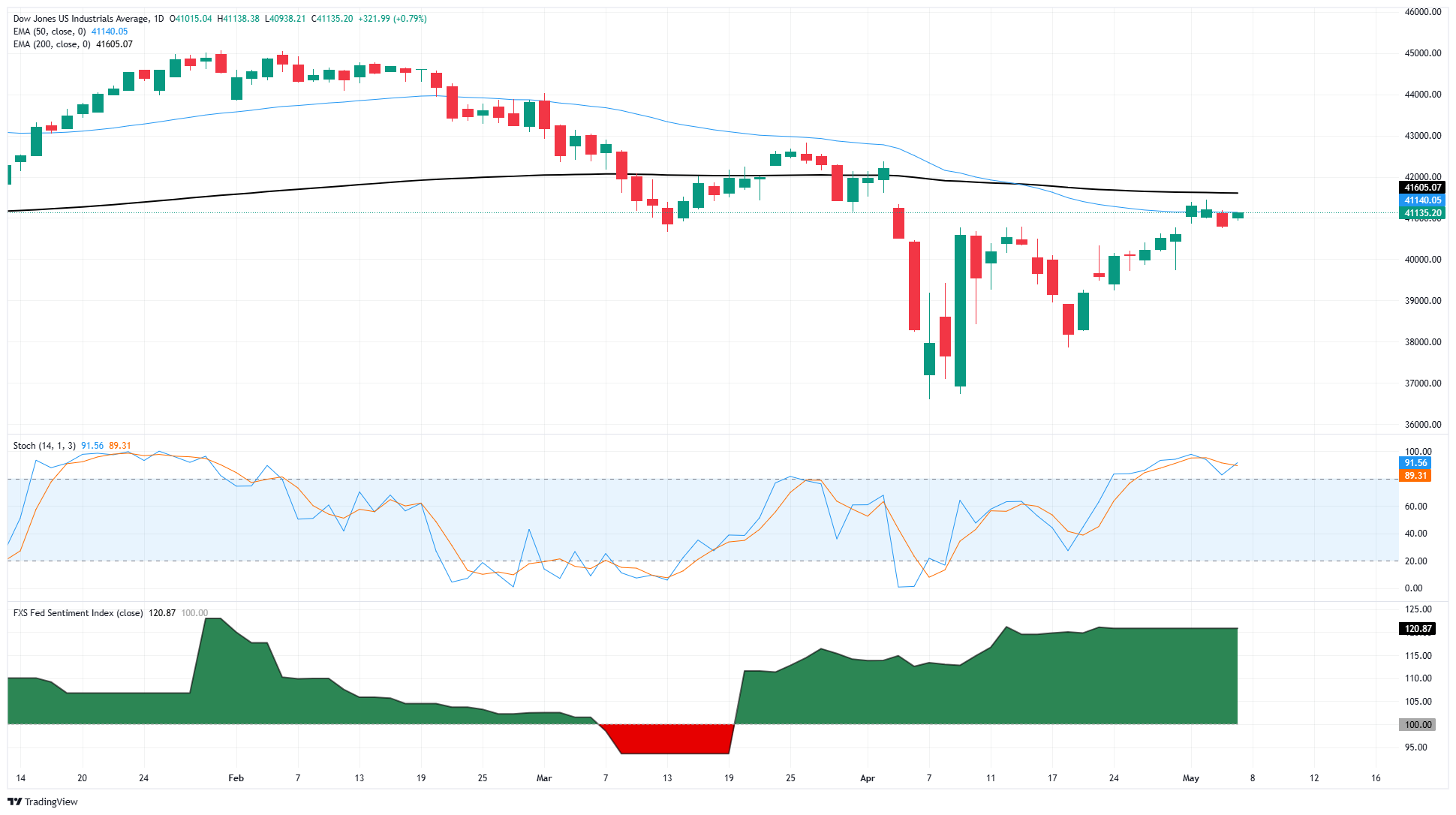Dow Jones Industrial Average holds steady ahead of Fed rate call
- The Dow Jones stuck close to 41,000 during the midweek market session.
- Investors are trimming their exposure as they await Fed Powell’s latest appearance.
- The Fed is broadly expected to keep rates on hold, but markets are looking for signs of a pivot.
The Dow Jones Industrial Average (DJIA) trimmed into the midrange during early Wednesday trading, treading water just above the 41,000 major handle as investors await the latest rate call from the Federal Reserve (Fed). The Fed is all but guaranteed to keep interest rates steady amid widespread market uncertainty at the hands of volatile policy strategies pouring out of the Trump administration, however rate-cut-hungry investors will be keeping a close eye on Fed Chair Jerome Powell’s appearance later today as they look for signs that the Fed could getting closer to pivoting into a new rate-cutting cycle.
Fed rate cut hopes to clash with cut-shy Fed
Hopes for a near-term pivot into fresh rate cuts may prove to be poorly structured; according to FXStreet’s own Fed Sentiment Index, the overwhelming majority of Fedspeakers have been tilting well away from language that would imply impending rate cuts. With a strong employment landscape and inflation continuing to ease back to target levels, the Fed has little reason to be overly concerned about dropping interest rates to support an economy that doesn’t appear to need it. Adding in the fact that ham-handed trade policies and tactics from the Trump administration have significantly elevated market volatility, the Fed has little powder in reserve to deliver rate cuts that both the White House and market participants have been clamoring for.
News of the US and China getting ready to kick off trade talks this weekend in Switzerland initially supported equities early Wednesday, but US Treasury Secretary Scott Bessent was quick to temper market expectations. According to Treasury Secretary Bessent, trade talks in Switzerland will simply be a preliminary measure, and meaningful progress could take some time to materialize.
Dow Jones price forecast
The Dow Jones has pivoted into a middling pattern this week, churning chart paper near the 41,000 handle. Bids remain swamped in the 50-day Exponential Moving Average (EMA), and momentum in either direction has evaporated.
Dow Jones daily chart

Dow Jones FAQs
The Dow Jones Industrial Average, one of the oldest stock market indices in the world, is compiled of the 30 most traded stocks in the US. The index is price-weighted rather than weighted by capitalization. It is calculated by summing the prices of the constituent stocks and dividing them by a factor, currently 0.152. The index was founded by Charles Dow, who also founded the Wall Street Journal. In later years it has been criticized for not being broadly representative enough because it only tracks 30 conglomerates, unlike broader indices such as the S&P 500.
Many different factors drive the Dow Jones Industrial Average (DJIA). The aggregate performance of the component companies revealed in quarterly company earnings reports is the main one. US and global macroeconomic data also contributes as it impacts on investor sentiment. The level of interest rates, set by the Federal Reserve (Fed), also influences the DJIA as it affects the cost of credit, on which many corporations are heavily reliant. Therefore, inflation can be a major driver as well as other metrics which impact the Fed decisions.
Dow Theory is a method for identifying the primary trend of the stock market developed by Charles Dow. A key step is to compare the direction of the Dow Jones Industrial Average (DJIA) and the Dow Jones Transportation Average (DJTA) and only follow trends where both are moving in the same direction. Volume is a confirmatory criteria. The theory uses elements of peak and trough analysis. Dow’s theory posits three trend phases: accumulation, when smart money starts buying or selling; public participation, when the wider public joins in; and distribution, when the smart money exits.
There are a number of ways to trade the DJIA. One is to use ETFs which allow investors to trade the DJIA as a single security, rather than having to buy shares in all 30 constituent companies. A leading example is the SPDR Dow Jones Industrial Average ETF (DIA). DJIA futures contracts enable traders to speculate on the future value of the index and Options provide the right, but not the obligation, to buy or sell the index at a predetermined price in the future. Mutual funds enable investors to buy a share of a diversified portfolio of DJIA stocks thus providing exposure to the overall index.
